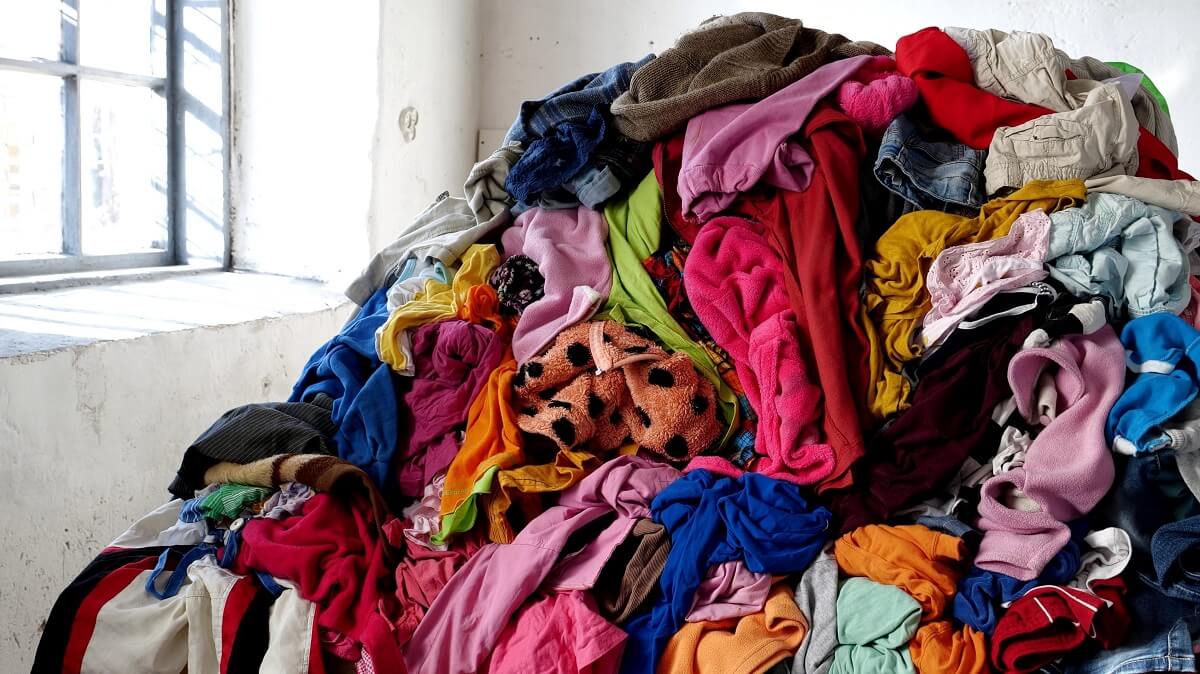Fashion isn’t just about style; it is a dynamic and impactful part of our daily lives. It is one of the biggest industries in the world, and beyond the trends and fads, there lies a detrimental impact on the Earth’s environment. Fashion, particularly, fast fashion has a significant carbon footprint and contributes heavily to climate change.
A recent report from the Berlin-based thinktank Hot or Cool Institute reveals that Australians buy more fast fashion items than any other wealthy nation. The study suggests a necessity for Australians to cut down their clothing consumption by 74 per cent. This calculation is based on the assumption that fashion emits 4 per cent of global greenhouse gas emissions.
Fast fashion is the latest trendy clothes available in a plethora of options, at the most affordable prices. It is a fashion industry strategy where clothing is quickly produced, following the newest styles and trends. The focus is on speed, getting those trendy looks from the runway to the store as quickly as possible. This leads to a constant cycle of new collections, tempting us to buy more, often at really low prices. However, the downside to this is that fast fashion relies on cheap labour, made by exploiting workers in developing countries. It also uses low-quality materials, causing serious environmental issues.
The fashion industry is responsible for the consumption of 79 trillion litres of water annually. If used for drinking, this water would be enough to meet the needs of five million people. It is also a major polluter at all stages of production and the cheap clothes often end up in landfill, contributing even more to land pollution. According to Earth.org, 92 million tonnes of textile waste is produced every year.
There’s a growing movement towards seeking more sustainable and ethical alternatives in the fashion world. Here’s how buying fast fashion impacts the environment and some practical ways you can tweak your clothing choices to be more sustainable.
Challenges to help you cut down on fast fashion
There are always new challenges and movements popping up to help people control their shopping habits. Challenges such as buy nothing new, project 333 and rule of five are all popular options.
All of them come with limitations and frustrations but advocates for each say the rewards outweigh the struggles. British fashion editor and author Tiffanie Darke swears by the rule of five. This challenge permits one new purchase a season, not counting lingerie, socks and underwear. Some vintage is allowed, as are rental, repair, alterations and borrowing from friends. “Although five is a tough number, it’s doable,” Ms Darke says.
Courtney Carver developed project 333 as a response to her desire for a simplified life and wardrobe. The challenge involves living with a minimalist wardrobe comprising only 33 items for three months. This count includes clothing, accessories, jewellery, footwear and outerwear. Excluded from the count are underwear, socks, pyjamas, house clothes, workout gear and one or two sentimental pieces of jewellery.
You must store away the rest of your wardrobe, keeping it out of sight and mind for three months. Then, you can either conclude the challenge or reevaluate and rotate items in and out.
How to change your habits
Embrace mindfulness: carefully think about and assess each purchase. Ask yourself whether each item is a necessary addition to your wardrobe and if it goes well with your style. This helps in reducing impulse buying and the need to participate in each trend.
Prioritise quality over quantity: choose to buy fewer pieces of better quality clothes rather than more cheaply made clothes. Invest in timeless, durable pieces that you can wear on different occasions with slight styling changes, as these have a longer lifespan. Even though you pay more initially, better quality items will last longer, meaning they won’t need to be replaced as often.
Support sustainable fashion brands: find brands that are committed to sourcing ethically and have good labour practices in place to prevent the exploitation of marginalised workers. The sustainable fashion industry is currently worth almost $6.5 billion and is expected to grow to $10.1 billion by the year 2025. Supporting sustainable and eco-friendly brands can influence this massive industry to prioritise good environmental practices.
You can extend the lifecycle of most garments through recycling or upcycling. Nowadays, many video creators online show different methods on how to upcycle an old bed sheet into a cool jacket or upgrade an old pair of jeans to a denim skirt. Some brands such as Lululemon and The North Face take back previously purchased clothes in a ‘Take Back Program’ for recycling or resale.
The fast fashion industry is expected to emit an estimated 2.7 billion tonnes of carbon dioxide equivalent by the year 2030. You can help by making small changes such as contemplating your purchases and prioritising good quality items over cheap, one-time use clothes.
What do you think about fast fashion? Are there any fast fashion brands you refuse to buy? Share your thoughts in the comments section below.
Also read: Dos and don’ts of affordable fashion


I like the 33 items for the season. But a bit challenging In Melbourne where we can have 4 seasons in one day.